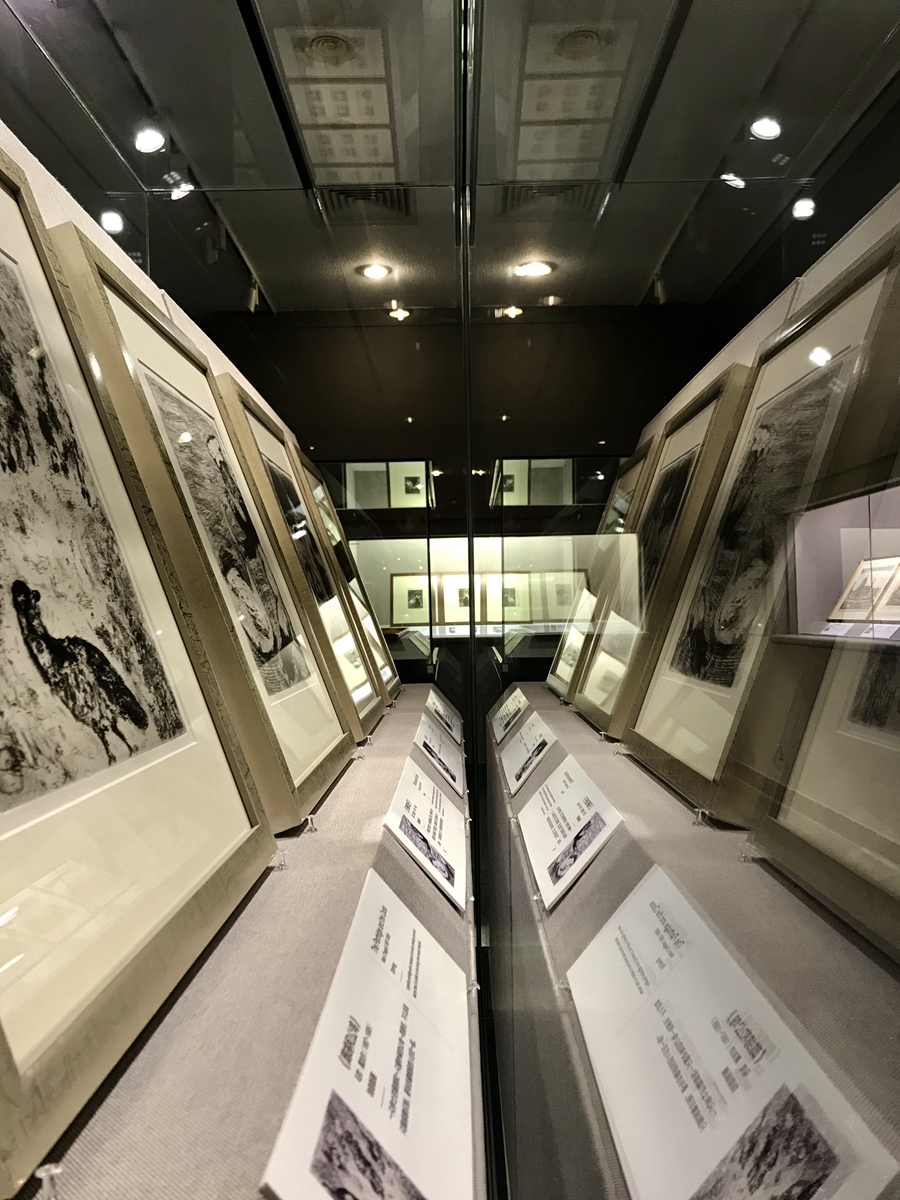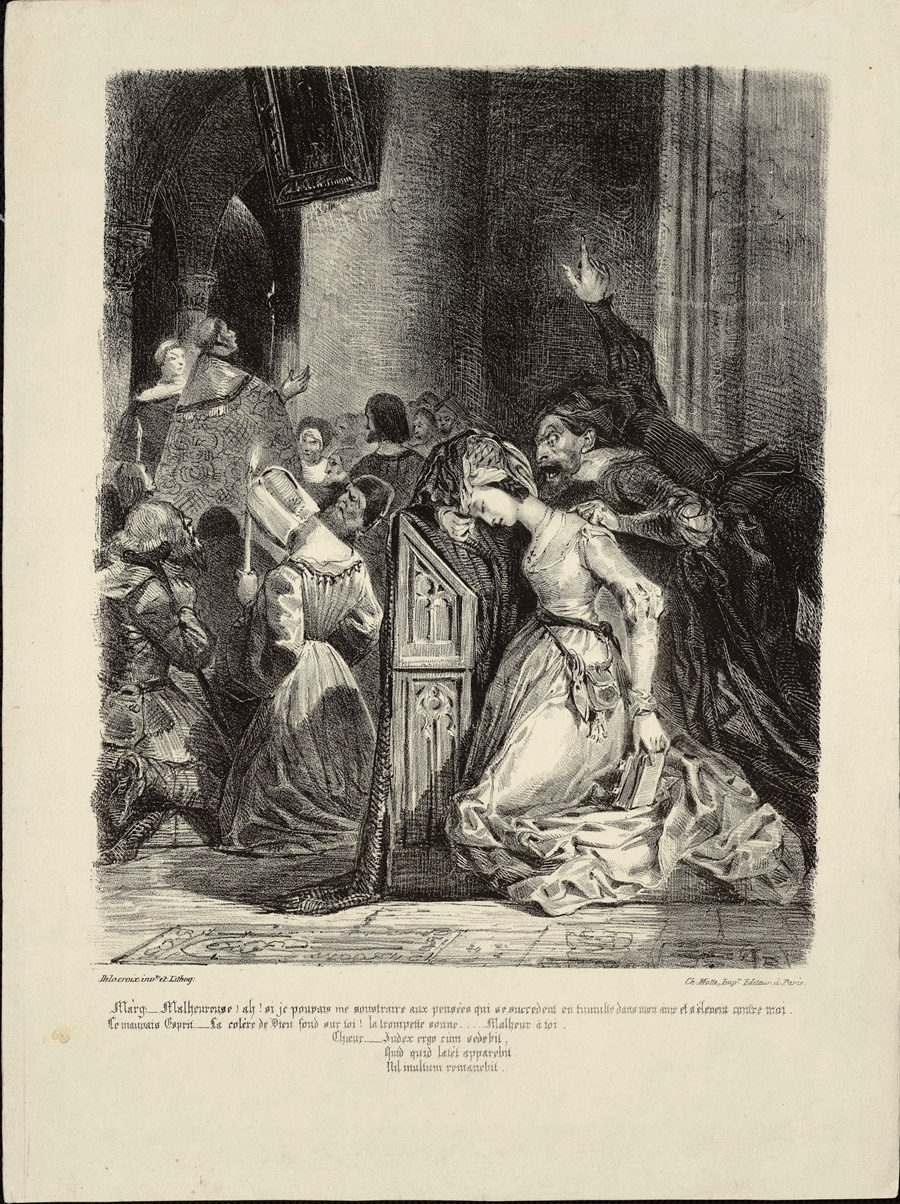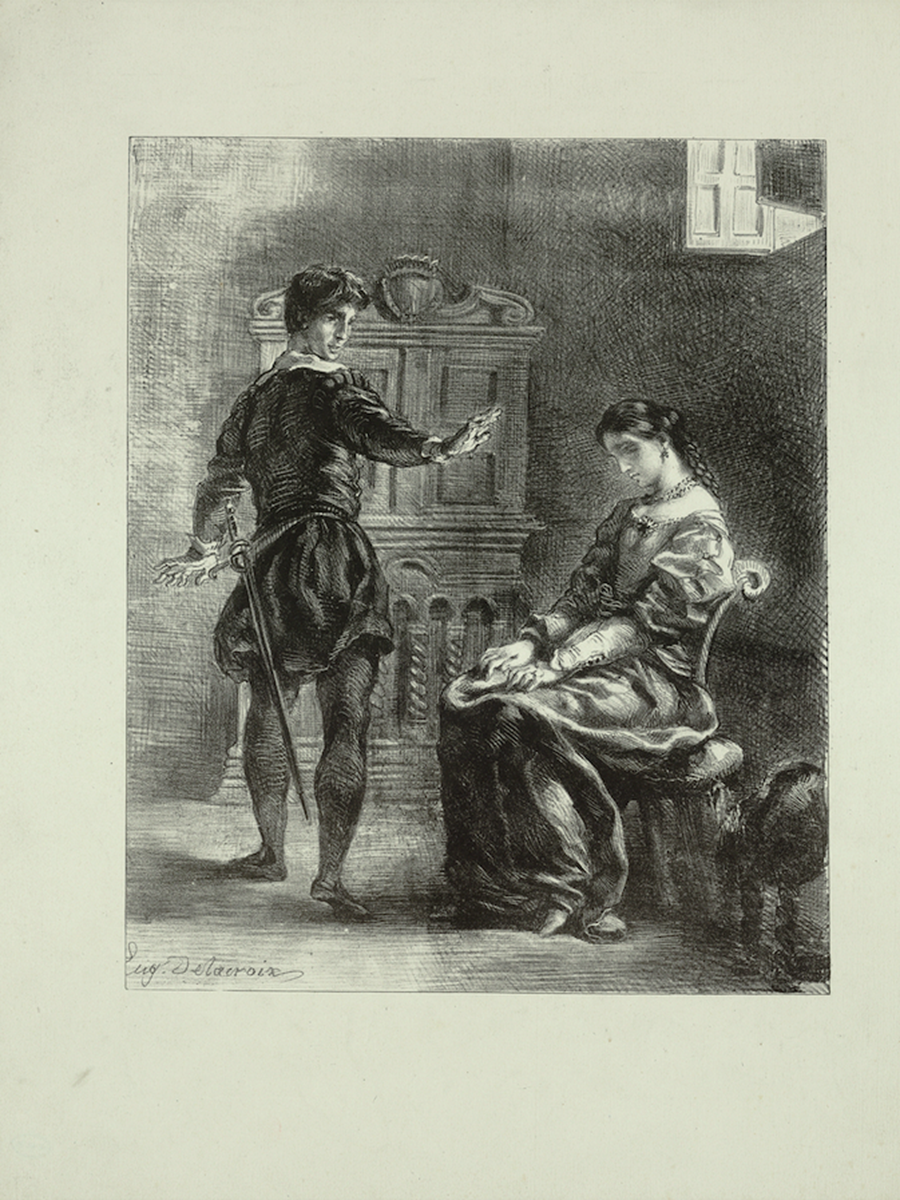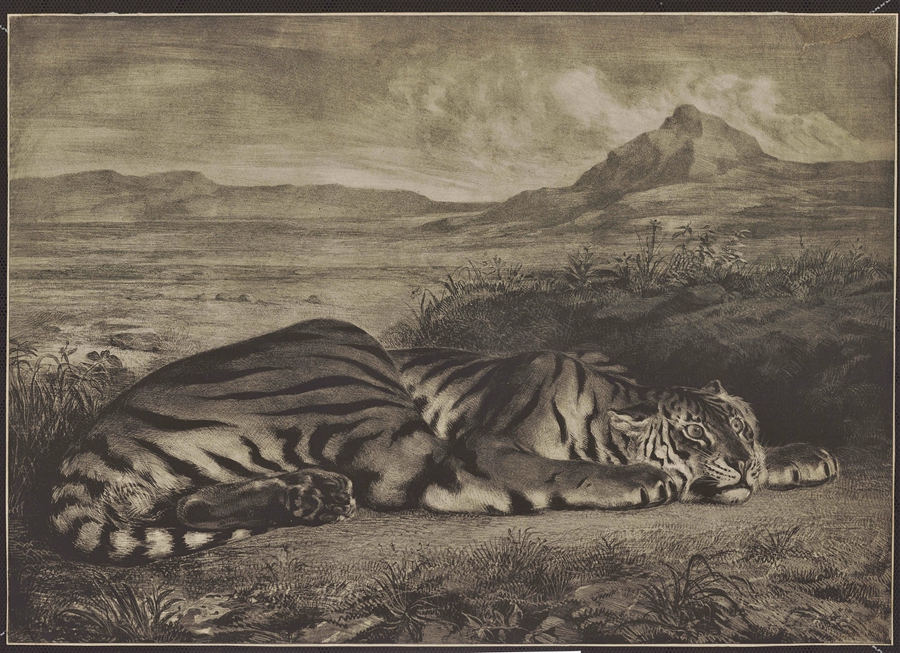Peking University, April 24, 2020: A collection of the French master painter's prints and drawings donated to Peking University is on show and can be viewed through virtual tours.
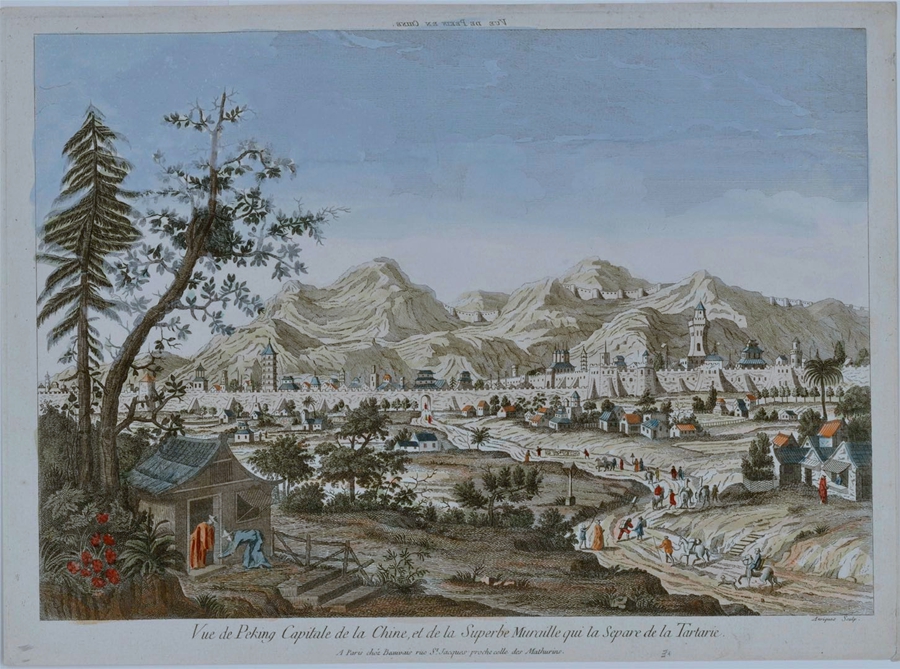 An 18th-century European print on show illustrates Beijing and the Great Wall.[Photo provided to China Daily]
An 18th-century European print on show illustrates Beijing and the Great Wall.[Photo provided to China Daily]
Eugene Delacroix is best known for his painting, Liberty Leading the People, which he completed in 1830. People around the world recognize the monumental work as a cultural symbol of France, and it claimed Delacroix's place among the giants of French painting.
He painted Liberty Leading the People at age 32. He boasted a prolific and multidimensional career until his death in 1863. The master not only produced many paintings but also drawings and prints, which are less well-known to ordinary art audiences, including in China.
But these works are now in the collection of Peking University in Beijing, thanks to donations over several years by Donald Stone, an English professor at the school. They portray Delacroix's multifaceted creativity, his social concerns, and his passion for literature and animals.
Stone, who has collected art for six decades, has donated around 700 prints, drawings and watercolors by such Western masters as Raphael, Delacroix and Pablo Picasso to Peking University.
Eugene Delacroix's prints display illustrations of literary classics Faust.[Photo provided to China Daily]
He has taught at the school every fall semester since he retired from the English department of Queens College of the City University of New York in 2006.
Stone also curates a dozen themed exhibitions to show the works he has donated. They're on display in rotation at the Arthur M. Sackler Museum of Art and Archaeology on Peking University's campus.
And the body of Delacroix's works is of special significance.
Stone first donated 13 lithographs on which Delacroix illustrated William Shakespeare's tragedy, Hamlet, in 2007.
He showed all of them at the first exhibition of prints he curated at the Sackler Museum, titled The Inspiration of the Poet.
Afterward, Stone bought and donated more prints by Delacroix, mostly lithographs, as well as four drawings and one watercolor. This collection of Delacroix's works is at the heart of an ongoing exhibition, Minstrel of the 19th Century, which runs through Sept 13.
Prints by other Western artists, donated by Donald Stone, are on display at the Arthur M. Sackler Museum of Art and Archaeology at Peking University.[Photo provided to China Daily]
The Sackler Museum is temporarily shut down because of COVID-19.
But people can take virtual tours of the show with audio guides on the museum's WeChat account.
The Louvre hosted a historic exhibition in 2018 in collaboration with the Metropolitan Museum of Art in New York to survey Delacroix's entire career. Its introduction described the artist as "an engaging character" and "a virtuoso writer, painter and illustrator who was curious, critical … and devoted to his work".
The Sackler Museum exhibition gives a similar impression.
The displayed works reveal Delacroix's love of Shakespeare and Johann Wolfgang von Goethe, his admiration for the 16th-and 17th-century Flemish and Venetian masters, such as Peter Rubens, his critical views on social issues and an interest in Eastern cultures.
The exhibition features 15 Hamlet-themed lithographs-Delacroix made 16 pieces for the series-and 13 lithographs from a collection of 17 illustrating Goethe's dramatic work, Faust.
Delacroix left behind more than 100 etchings and lithographs.
Eugene Delacroix's prints display illustrations of literary classics Faust.[Photo provided to China Daily]
He initially made copies of prints by Rembrandt van Rijn and Francisco Goya, the great painters who inspired him enormously. Later, he made prints to reach a wider audience and to pay tribute to the writers he appreciated.
"I don't know of any artist who illustrated the work of so many writers, from the Greeks to Dante to Shakespeare and (John) Milton to (Lord) Byron and (Walter) Scott," Stone says of Delacroix's prints.
Delacroix created the Faust prints after seeing a performance of the play in London in 1825. They were published between 1826 and 1827. Goethe was still alive and saw the works.
"He (Goethe) was greatly impressed by them," Stone says. "He said to his secretary, (Johann Peter) Eckermann, 'How much more strongly the readers will find all alive and superior to what they were imagining!'"
Stone adds the Faust prints also set the first example of a major artist illustrating a major work of literature, a "livred' artiste (artist's book)".
Eugene Delacroix's prints display illustrations of literary classics Hamlet.[Photo provided to China Daily]
He says noted artists revived the tradition in the 20th century. His donations include rich examples, such as etchings by Picasso based on Histoire Naturelle, a work by the 18th-century French naturalist Comte de Buffon, and prints by Henri Matisse to illustrate the works of the 19th-century French poet Stephane Mallarme.
Delacroix was among several members of the French romantic generation, Victor Hugo and Alexandre Dumas included, who saw a production of Hamlet in Paris by a visiting British theater company in 1827.
Delacroix later produced Hamlet prints to depict the stage performance and text.
"I went over various artists who had created artworks inspired by Shakespeare and concluded that Delacroix was far and away the artist who best understood Shakespeare," Stone says.
Delacroix is known for presenting scenes of grand historic narratives, while his depictions of animals, such as tigers, lions and leopards, were a relatively private interest out of the public spotlight but no less enthralling.
His shrewd observations of different animals throughout his career allowed him to accurately portray their motions.
Royal Tiger, a print by Eugene Delacroix on show.[Photo provided to China Daily]
The Sackler Museum exhibition also features Delacroix's animal prints, which exude his respect for nature and admiration of life.
The dynamics he noticed while watching animals closely also inspired him when he worked with other subjects, such as landscapes and portraits.
"He (Delacroix) was not a vain artist. Almost everything he painted has a moral and/or literary theme," Stone says.
"He lived a remarkably simple life. For the great public commissions he did for the French state, he did mostly for free, charging only for paints and the service of his assistants.
"He adored past history. When he first visited North Africa, he said it was like being in the world of Homer (the Greek poet). He read very widely. And he loved music. Chopin was a good friend of his. For me, Delacroix is the most 'complete' artist I know of in Western civilization."
Dong Qiang, a professor of French language and literature of Peking University, says audiences will not only discover Delacroix's considerable attention to British and German literature at the exhibition but also will see deepening exchanges among different countries in the 19th century.
Minstrel of the 19th Century has been the 13th exhibition of prints that Stone had curated at the Sackler Museum. It also shows dozens of prints by other Western artists that Stone acquired for the museum in 2019.
They include works by Goya and Marc Chagall, as well as 18th-century pieces that offer hand-colored city views of China, France, Italy and Turkey.
"Of my 13 exhibitions for the Sackler Museum, this one is my favorite," Stone says.


